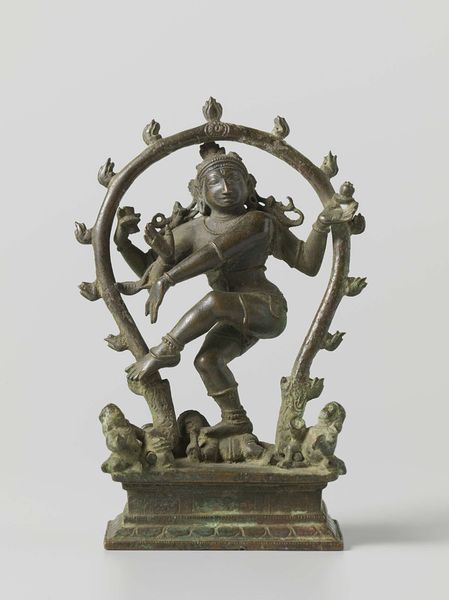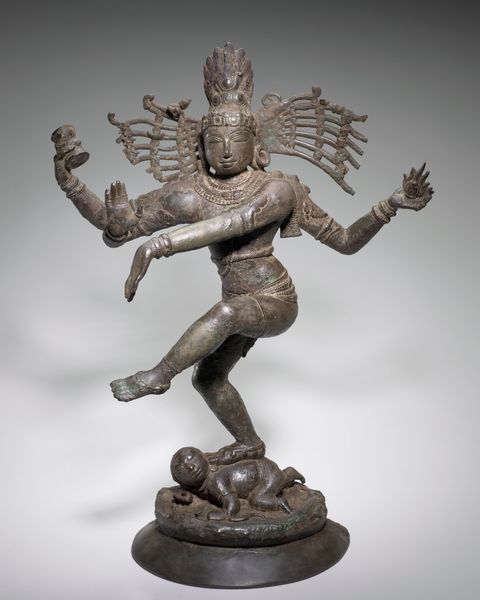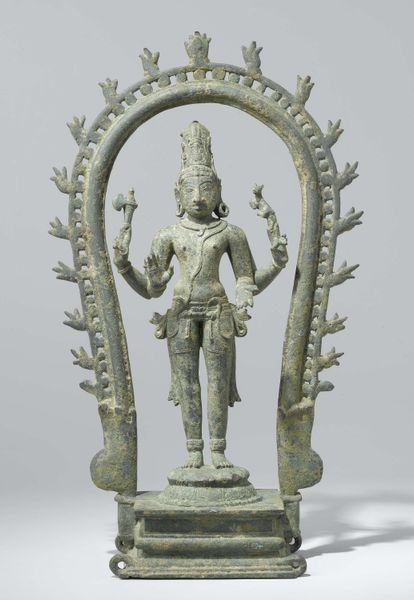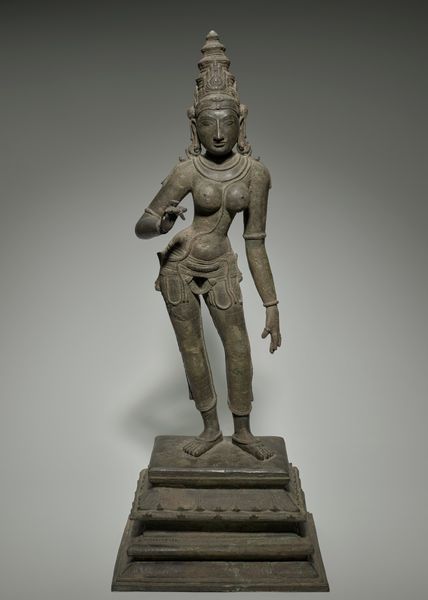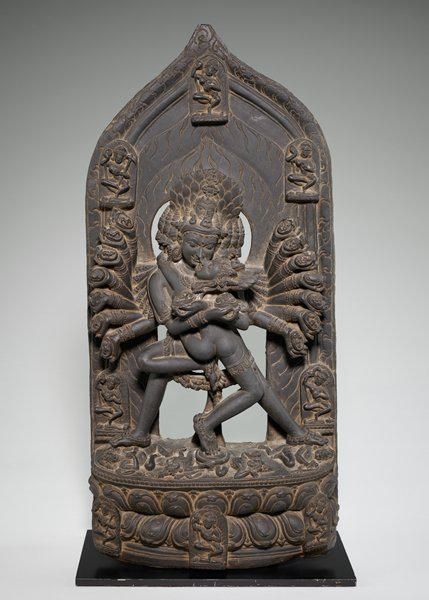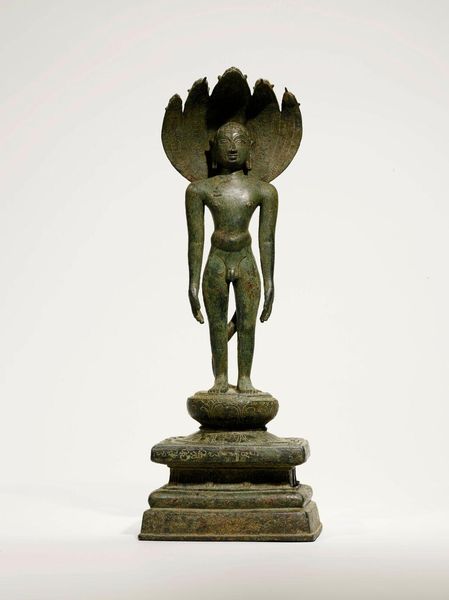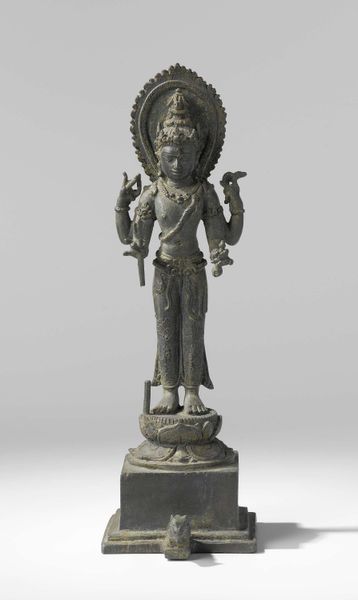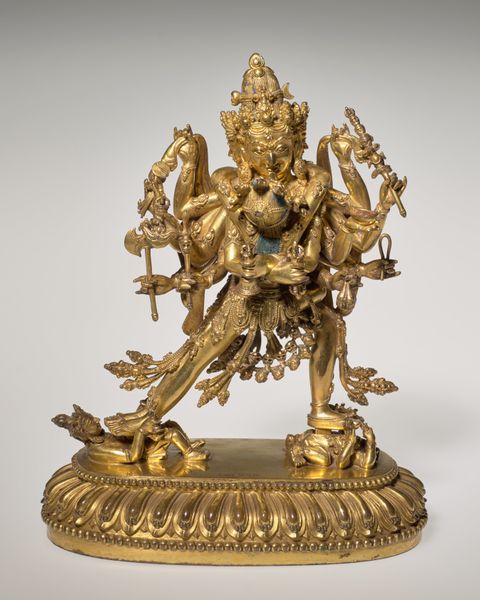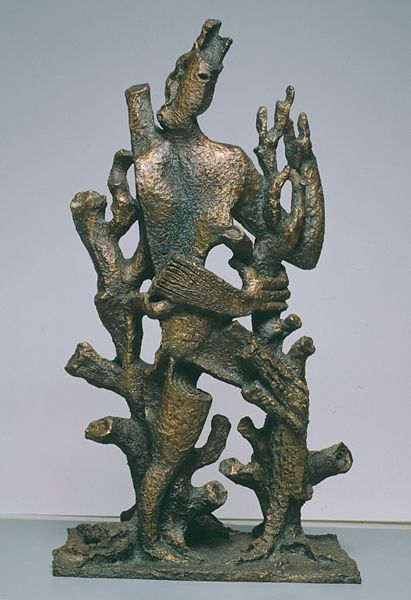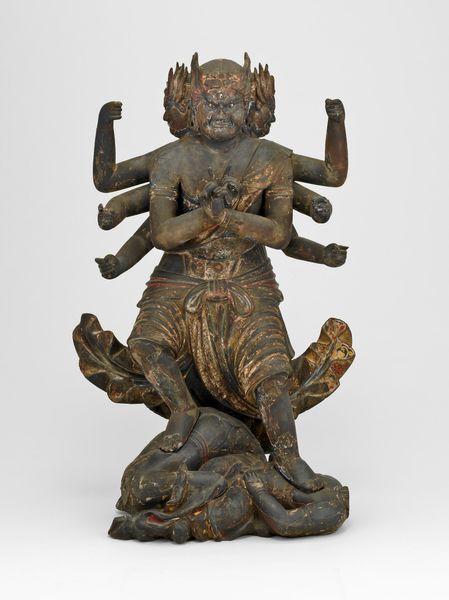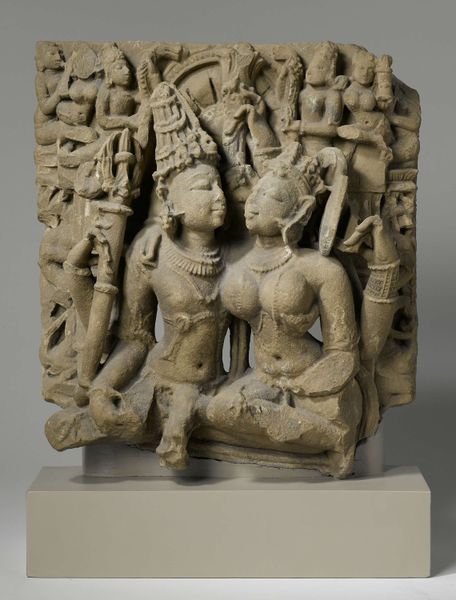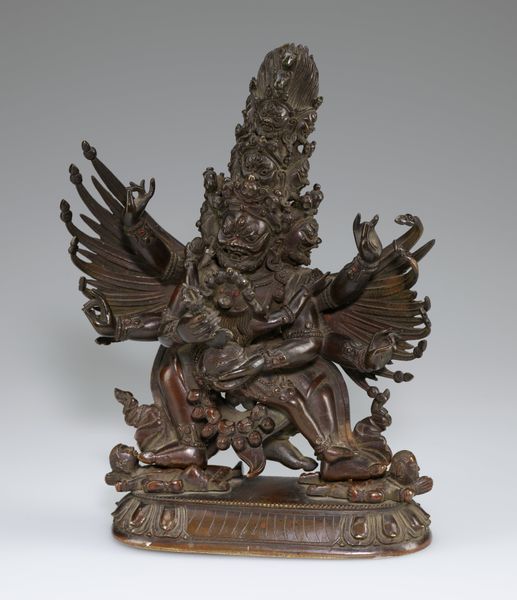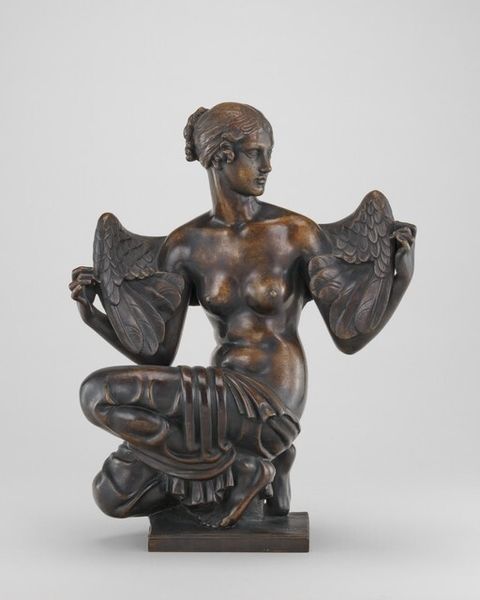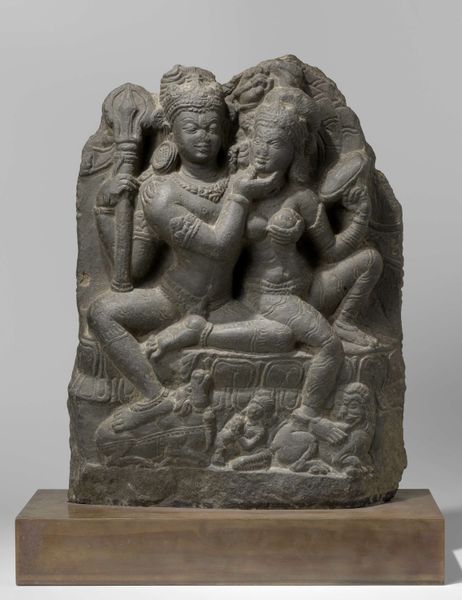
bronze, sculpture
#
medieval
#
narrative-art
#
sculpture
#
asian-art
#
bronze
#
figuration
#
geometric
#
sculpture
Dimensions: height 153.0 cm, width 114.5 cm, width 73.5 cm, depth 44 cm, height 19 cm, weight 255 kg, weight 40 kg
Copyright: Rijks Museum: Open Domain
This bronze sculpture depicts Shiva Nataraja, the Lord of Dance, an embodiment of cosmic energy and creation. His dance takes place within a flaming halo, a visual metaphor for the cyclical nature of time and the universe. Shiva's multiple arms each hold symbolic objects, such as the drum which symbolizes sound, the first element of creation. In one hand, he holds the fire, the element of destruction, that which brings about transformation. These symbols, seemingly contradictory, represent the eternal dance of creation and destruction, a balance reflected in the very cosmos. Observe the Apasmara, the dwarf of ignorance, crushed beneath Shiva's foot. This motif is like the taming of primal instincts seen in ancient Greek depictions of Heracles. Here, Shiva transcends earthly limitations, freeing humanity from illusion. The Nataraja is more than just a deity; it is a powerful, recurring idea which engages viewers on a deep, subconscious level, reminding us of the transient nature of existence.
Comments
rijksmuseum about 2 years ago
⋮
Shiva, in his manifestation as Nataraja (King of Dancers), represented in the anandatandava pose and encircled by a halo of fire, is both the creator and destroyer of the world. Beneath his foot is a dwarf, symbolizing ignorance. Richly decorated bronze figures of Hindu gods were carried in procession on feast days. Carrying poles were inserted through the rings on the base.
Join the conversation
Join millions of artists and users on Artera today and experience the ultimate creative platform.
